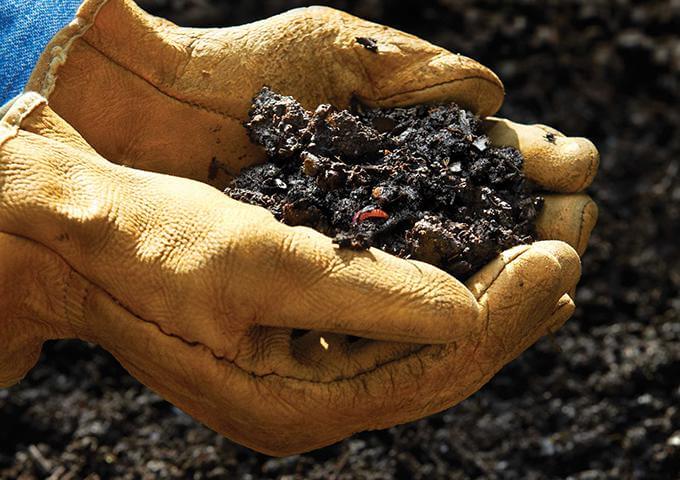Without proper care and maintenance, your lawn could make your commercial property look more like a dry dust bowl than a luscious garden – which is an eyesore no property owner wants on their hands.
So, what are our tips and tricks for properly maintaining lawns?
Effective weed control is essential
Probably one of the most mundane and laborious tasks when it comes to lawn maintenance is ensuring that your lawn is and stays weed-free. In the more humid and mild climates in the region, it can be particularly hard to control weeds – as they simply flourish in this environment.
The best defense against weeds is a healthy, happy lawn, which will become thick and block out most weed growth. A thick lawn is very restrictive on weeds, as it allows them very little surface room to grow. Mowing, thatching and aerating are the most efficient mechanical ways to ensure a thick and healthy lawn, but this can also be achieved with correct, balanced use of herbicides and a proper irrigation system.
Does your soil need to be aerated?
Grass, like any other plant, needs oxygen for survival and your lawn is only going to look great if your soil is healthy. If your lawn is looking worn, dry, and flat, or gets puddles after irrigation – chances are that you need to do some aeration. This problem is common in lawns that experience high levels of use or traffic, as the soil becomes compact and loses much of its oxygen and nutrients.
Aeration is the process where small plugs of soil are removed in order to allow the soil to absorb more oxygen and other nutrients, with direct access to the root system. The best time of year to get your lawn aerated is in the growing season when the grass can quickly and easily grow back after the plugs have been removed.
Fun fact about lawn:
Did you know that lawn produces around three times the amount of oxygen that trees produce? Even a small 50ft x 50ft lawn can produce enough oxygen for a family in a 24-hour cycle. It also removes high levels of carbon dioxide and hydrogen fluoride from the atmosphere.
Are you using the right kind of fertilizer?
A common error is assuming that any kind of fertilizer can go on any type of lawn. The basic types of fertilizers are slow-release, fast-release, compost, manure, and liquid fertilizers – and each is better suited to certain lawn types and conditions. This comprehensive guide from Home Depot will help you identify your grass type and will point you in the right direction with regards to which fertilizer you should be using.
Fertilizing is absolutely essential for a green and healthy-looking lawn, and is an important part of lawn maintenance. Lawns mainly need fertilizer in early spring when the grass begins to green up. Your fertilization schedule for the rest of the season depends on the type of grass in your lawn, the type of fertilizer you use, and your climate.

Make sure your lawn is being mowed correctly
Another vital component of lawn maintenance is ensuring that your grass is being mowed correctly. Mowing is essential for healthy grass to keep growing and regular trimming will help keep your lawn looking lush, neat, and orderly.
However, you need to remember that different types of grass require different trimming heights. For example, cool-season grass needs to be trimmed at three and a half inches, whereas warm-season grasses should be trimmed at a height of two inches. Many people follow the ‘one-third rule’, where you never cut away more than one-third of the grass blade.
Having a beautiful lawn on your commercial property can rival even the most beautiful leafy trees and stunning water features of any well-landscaped garden. Regular lawn maintenance can ensure that your lawn is green and healthy, and it can become the centerpiece of your garden.
.2103301200550.jpg)
Maintaining lawns, especially if you have more than one commercial property can be quite an undertaking and is something you should definitely learn from the professionals. Download our Landscape Maintenance Guide, which offers expert advice on landscaping for commercial property owners.
